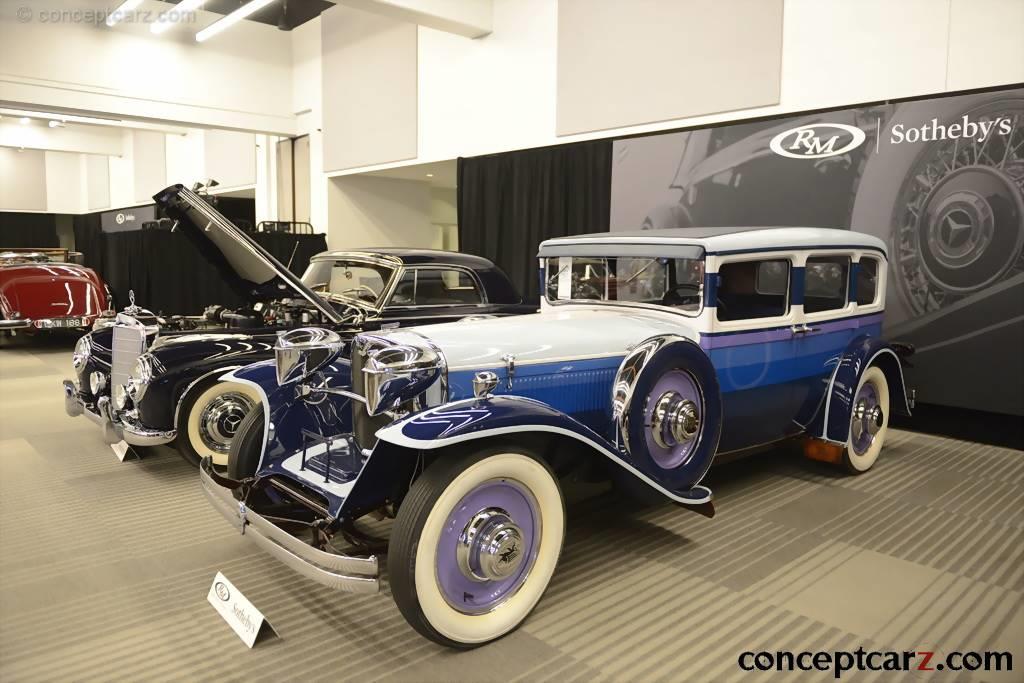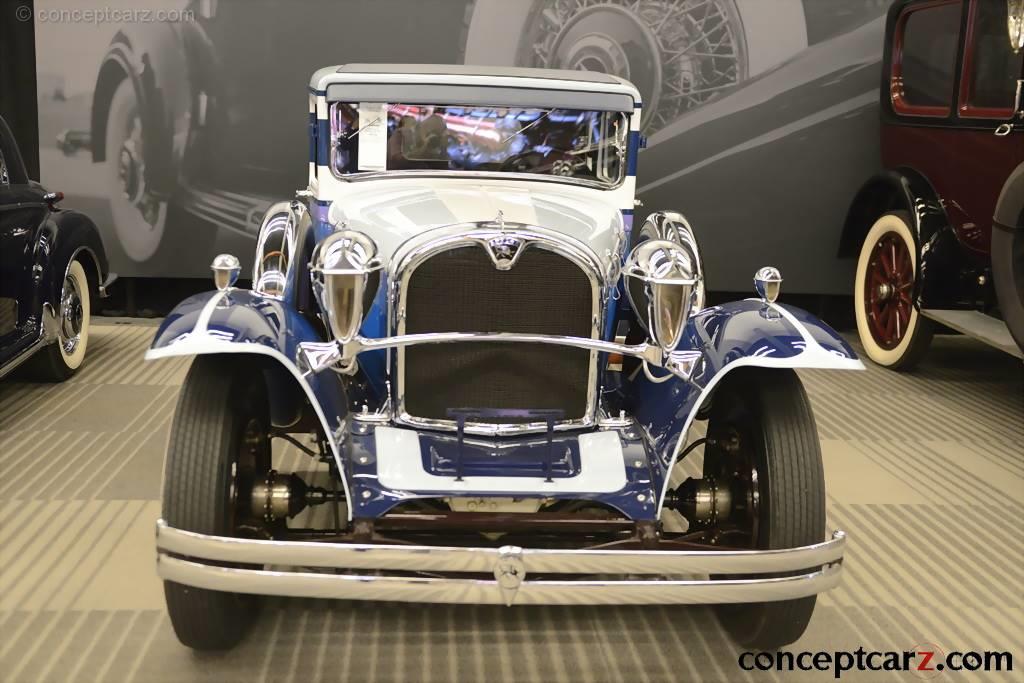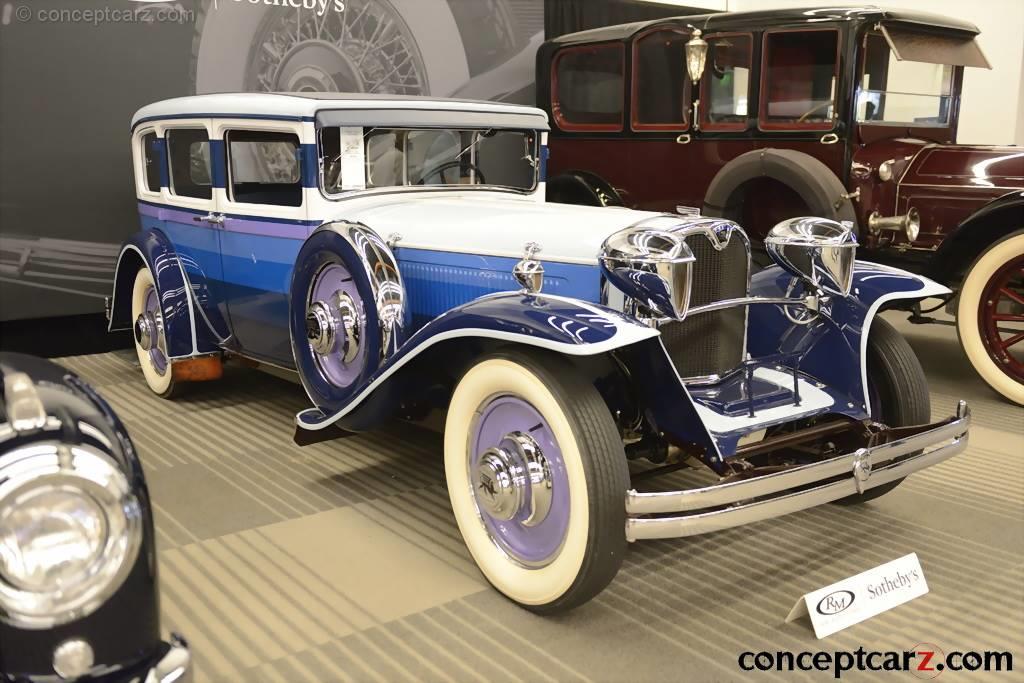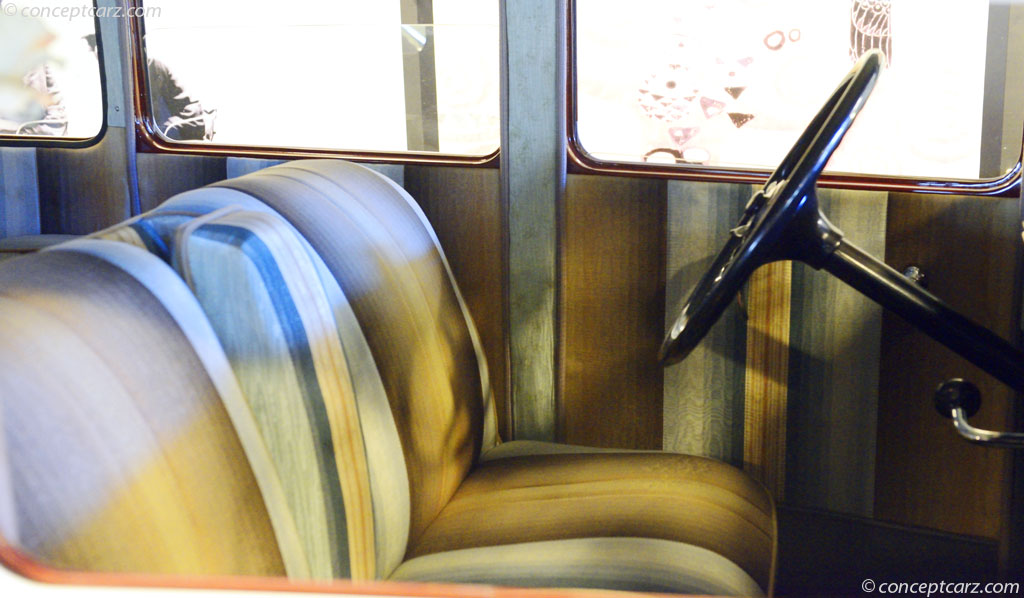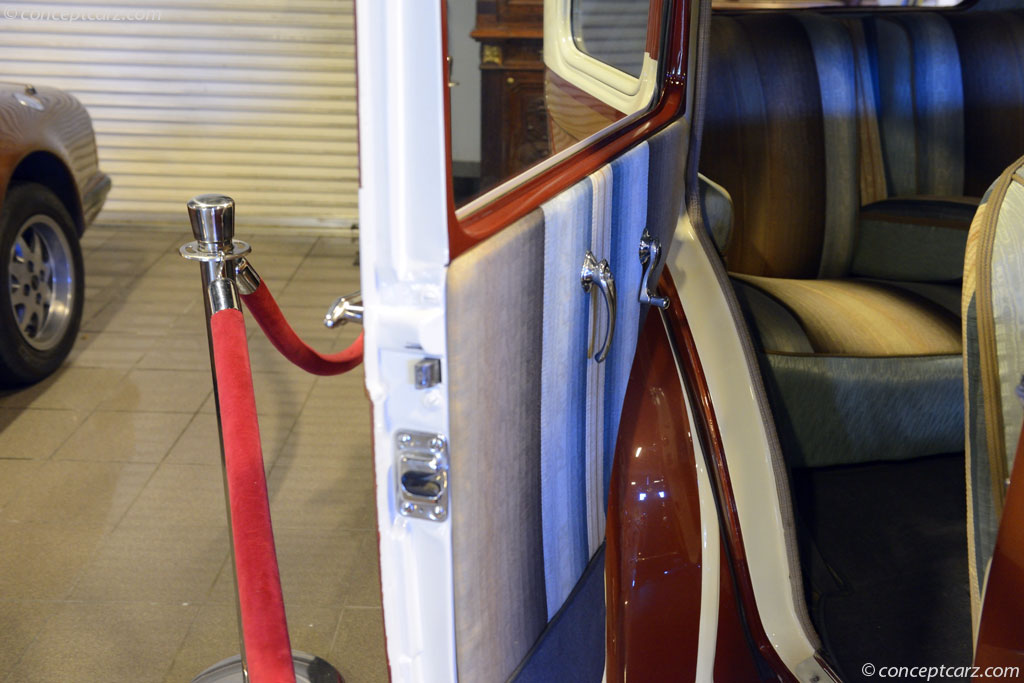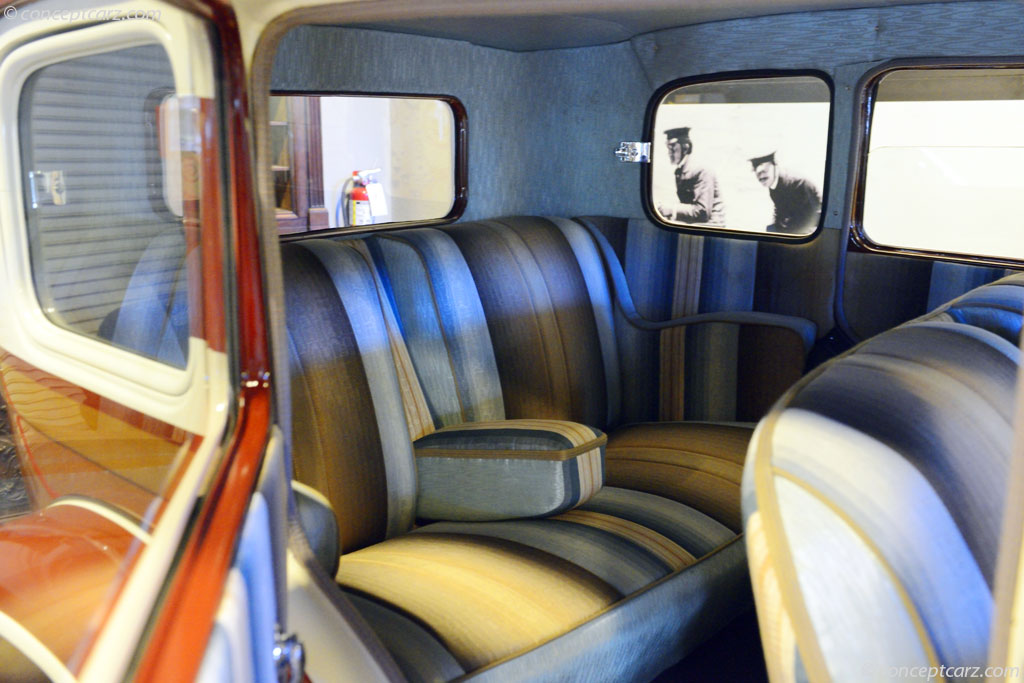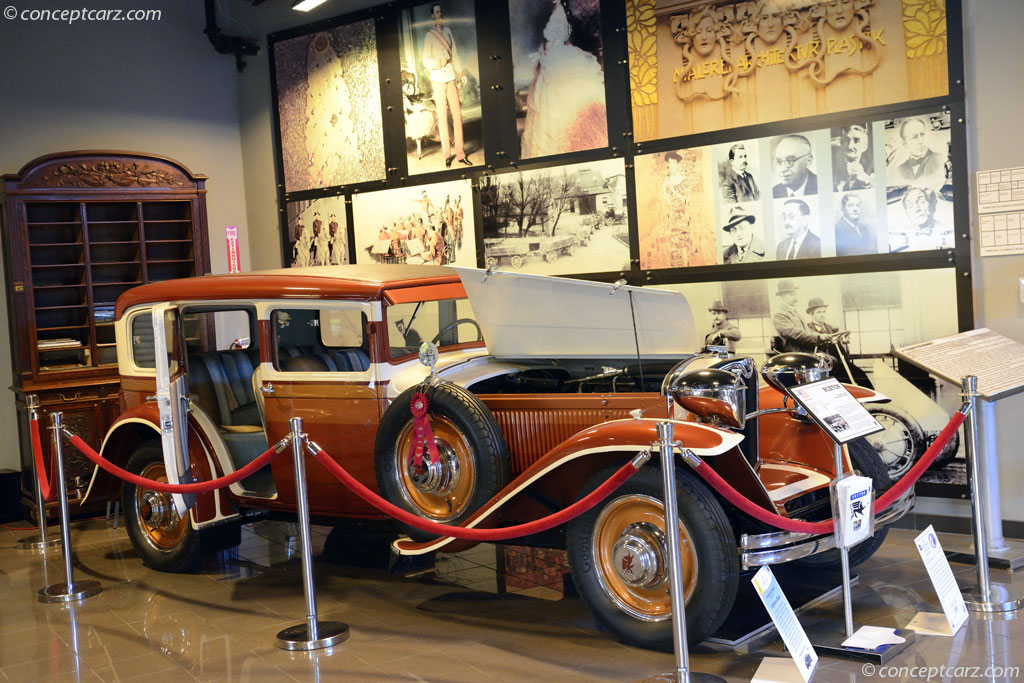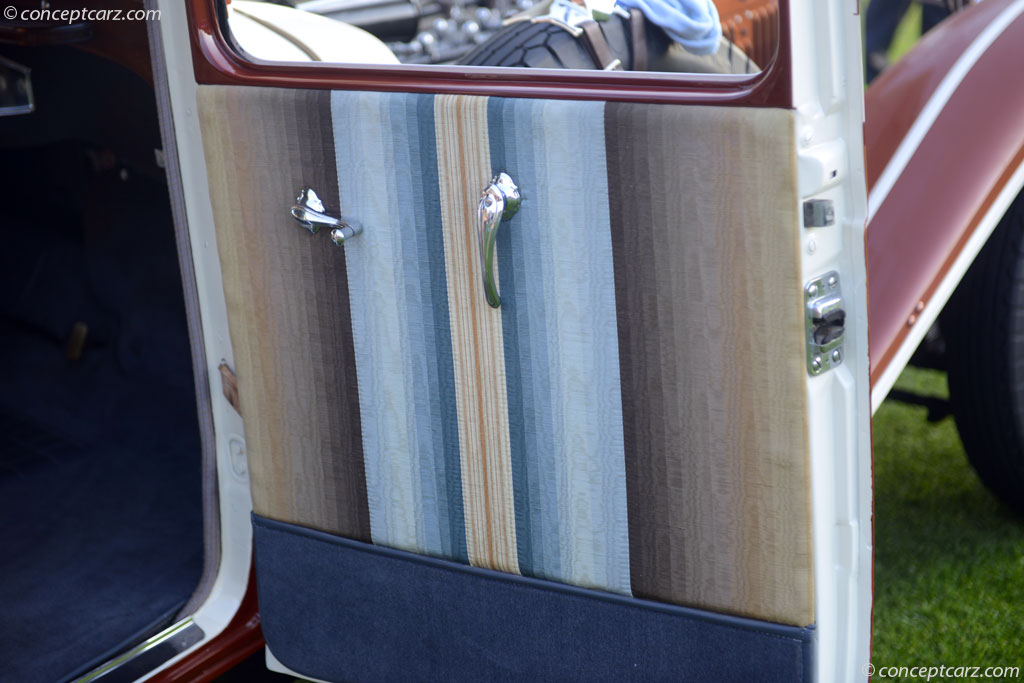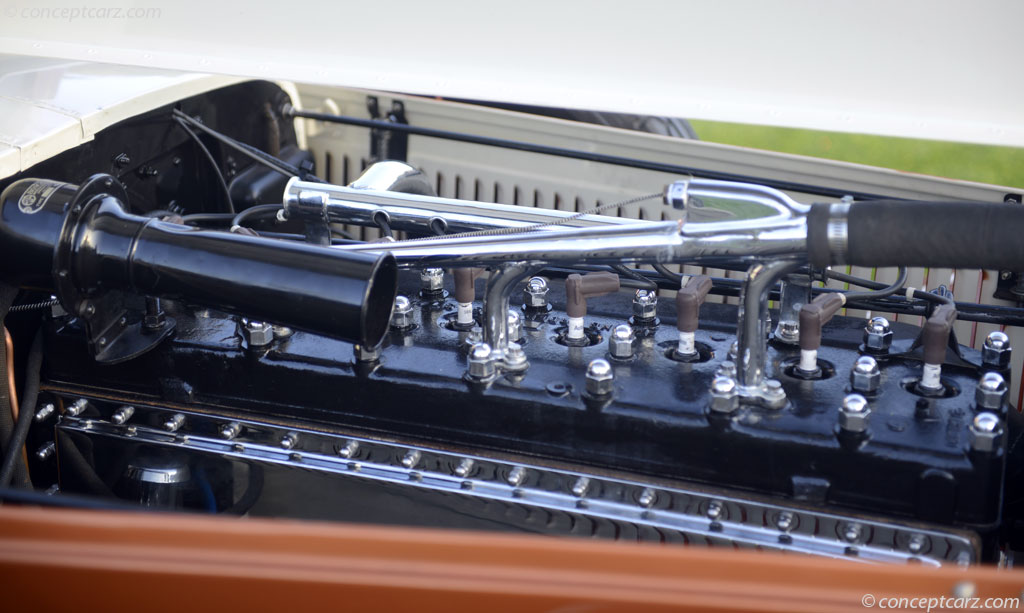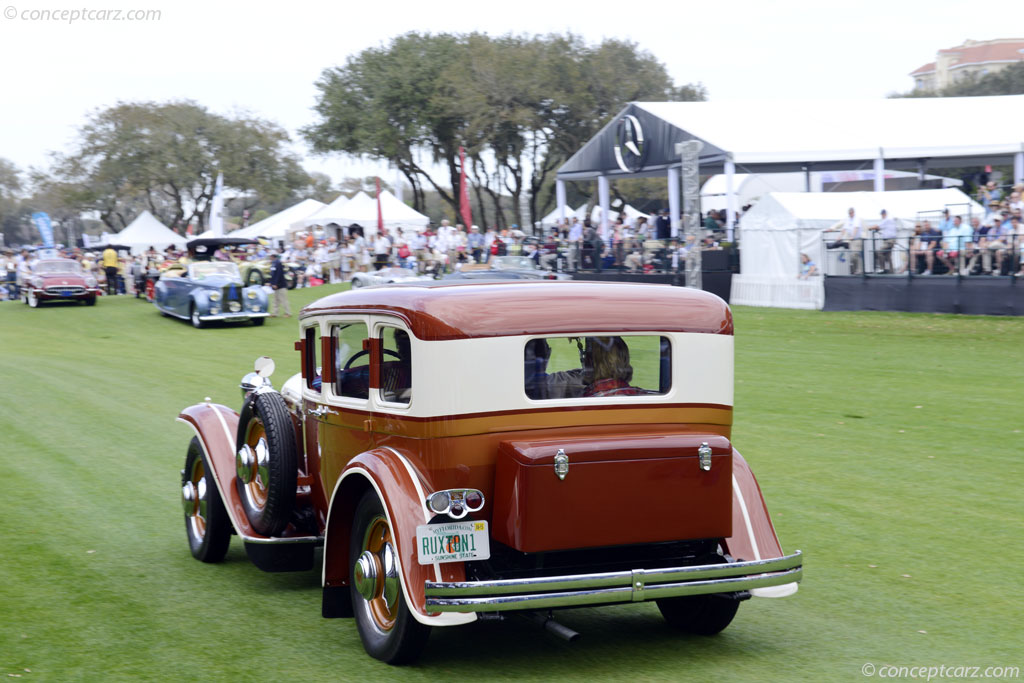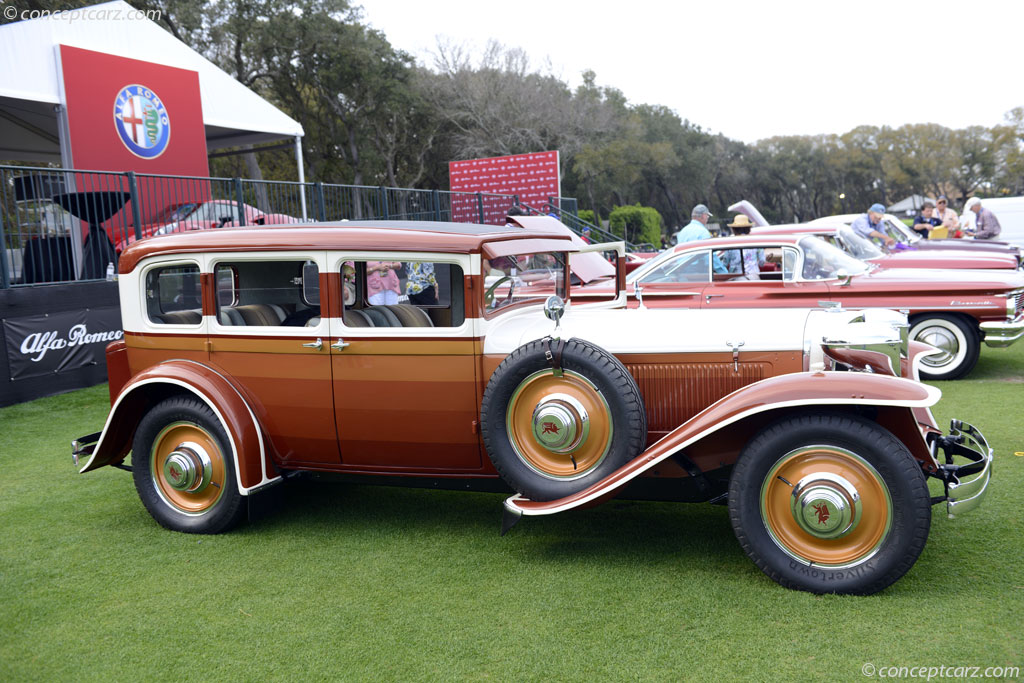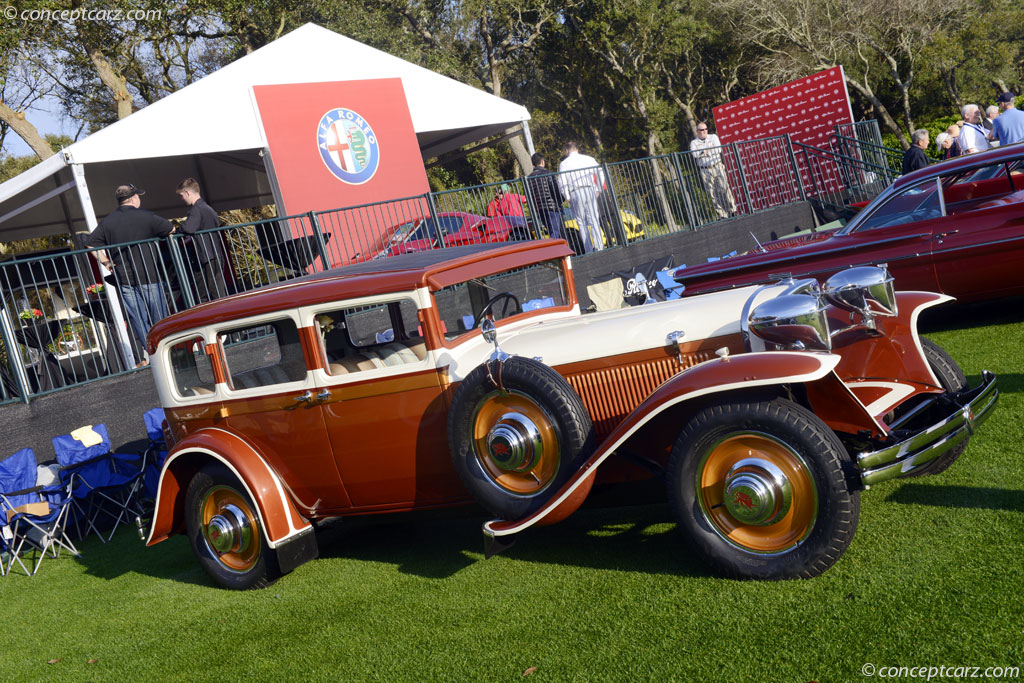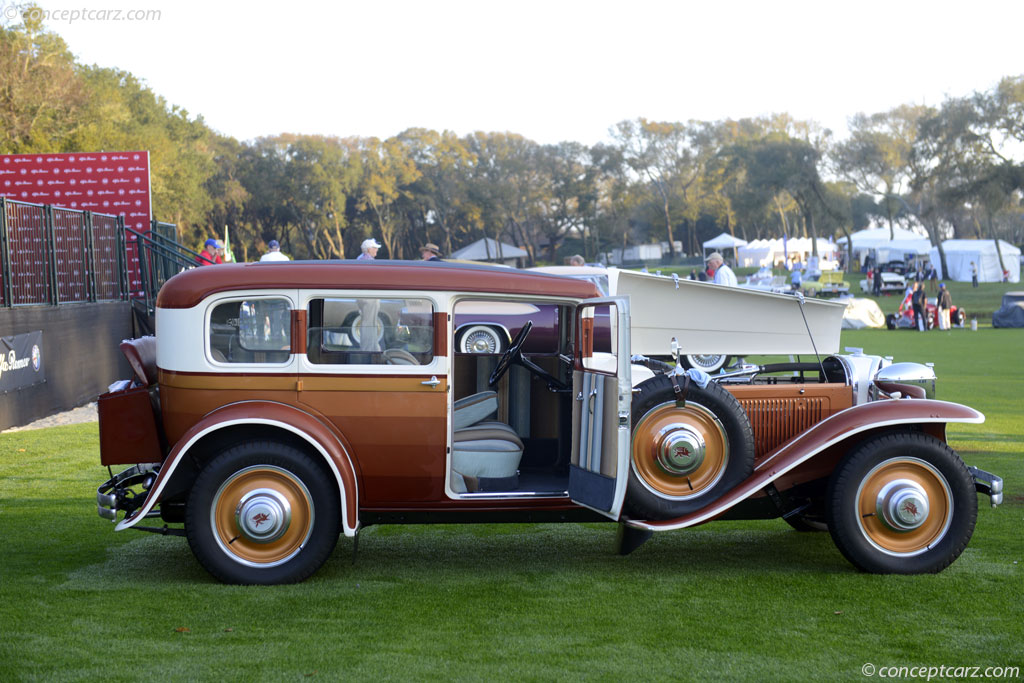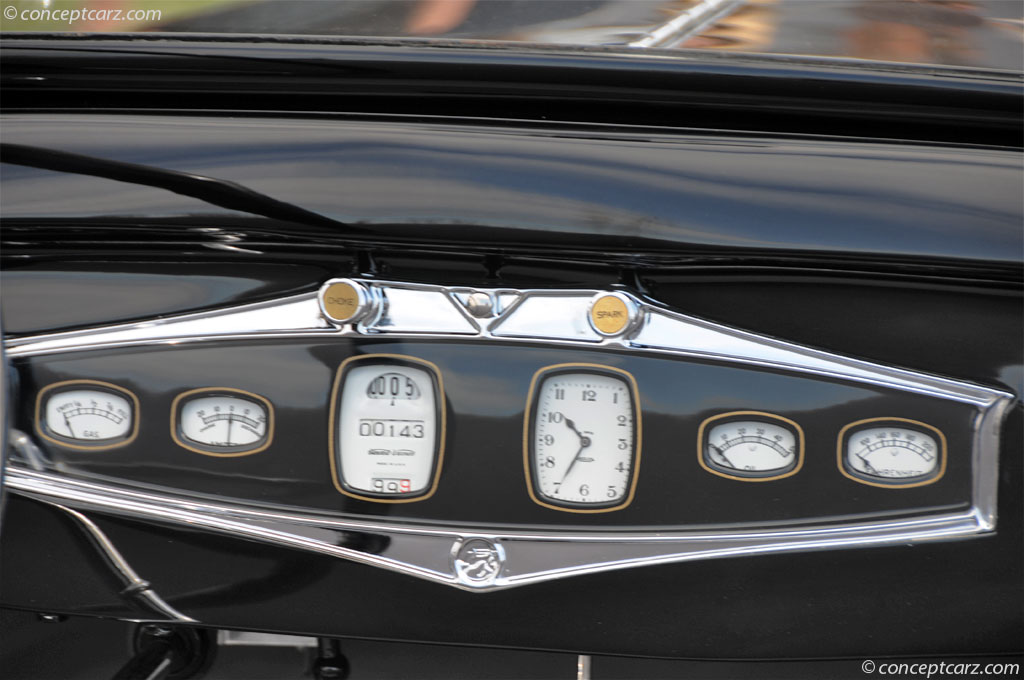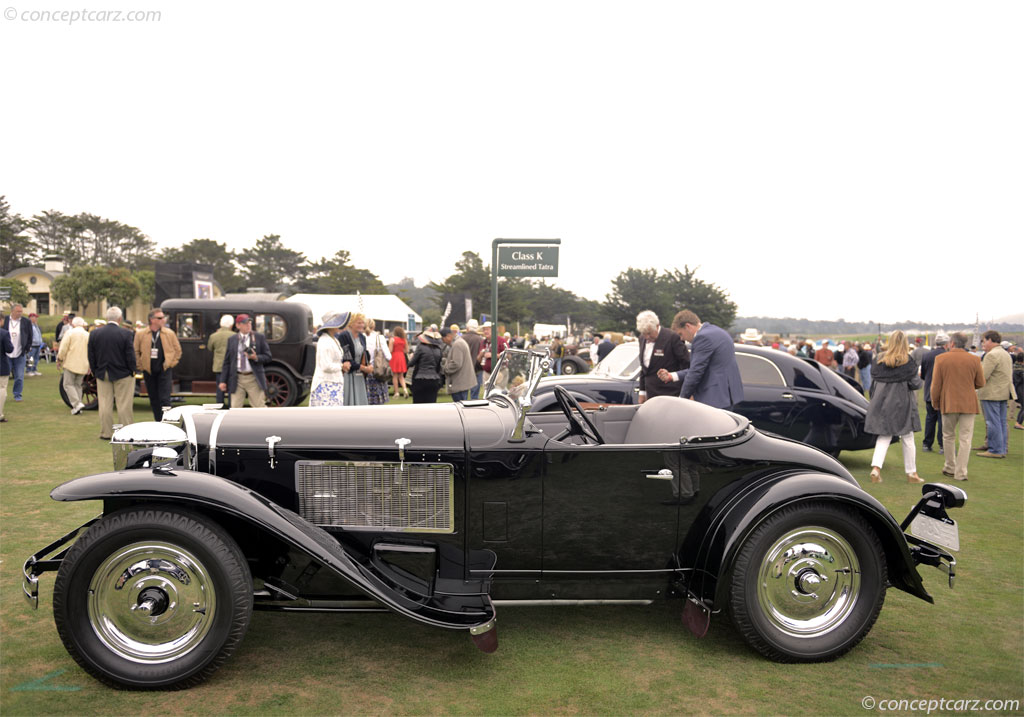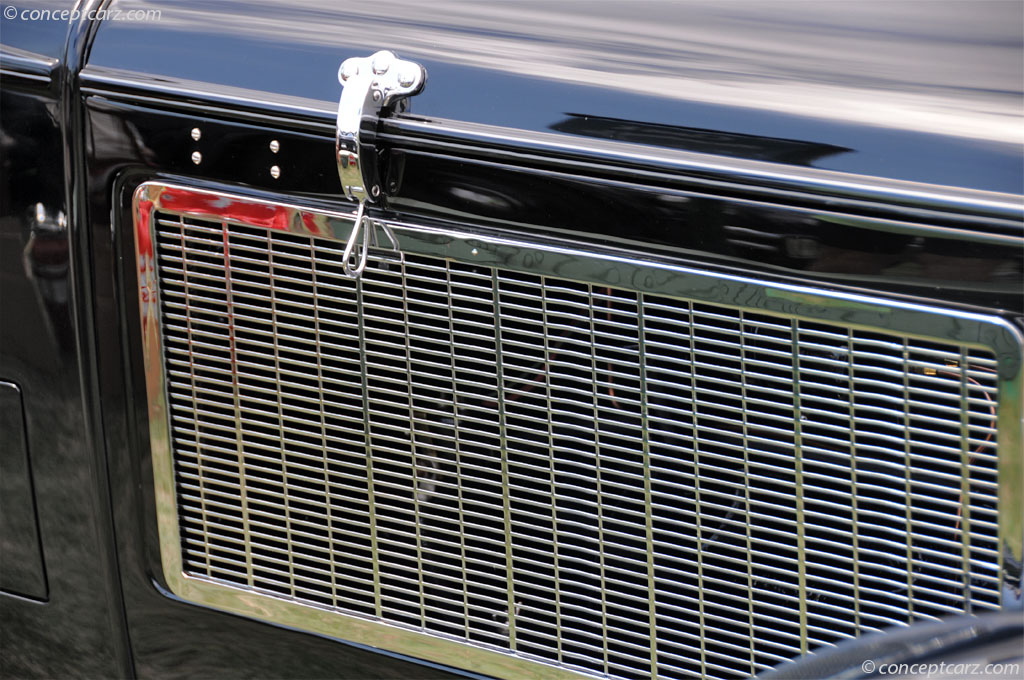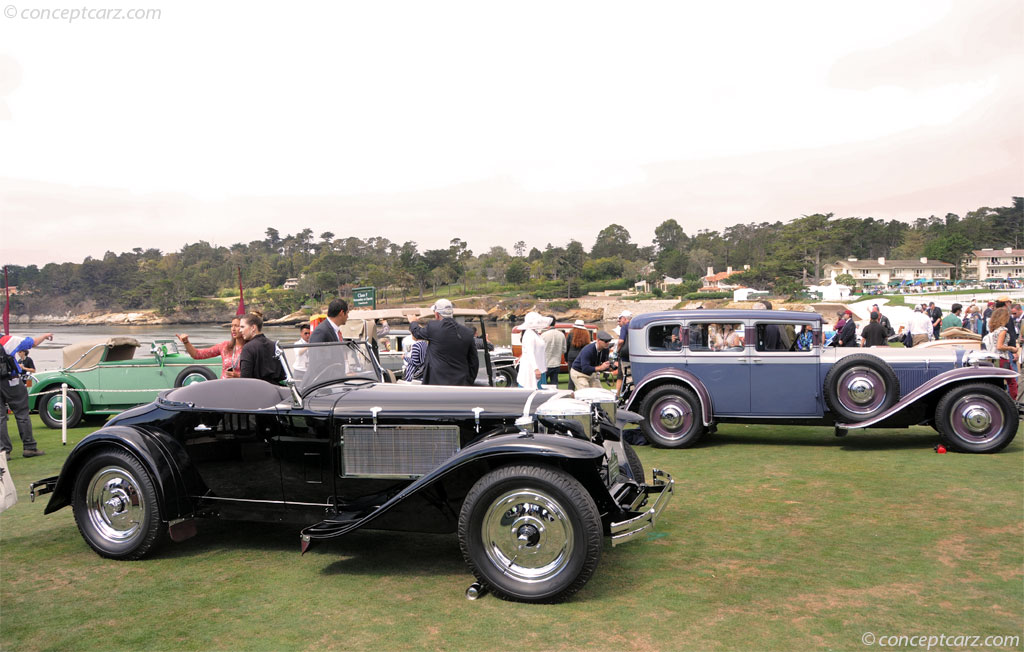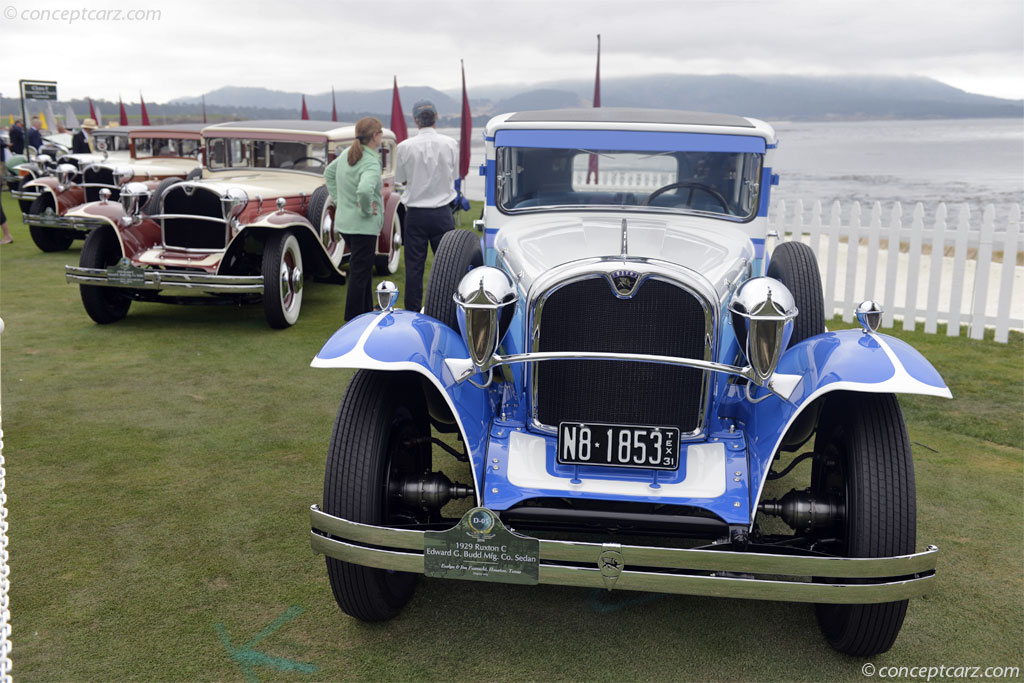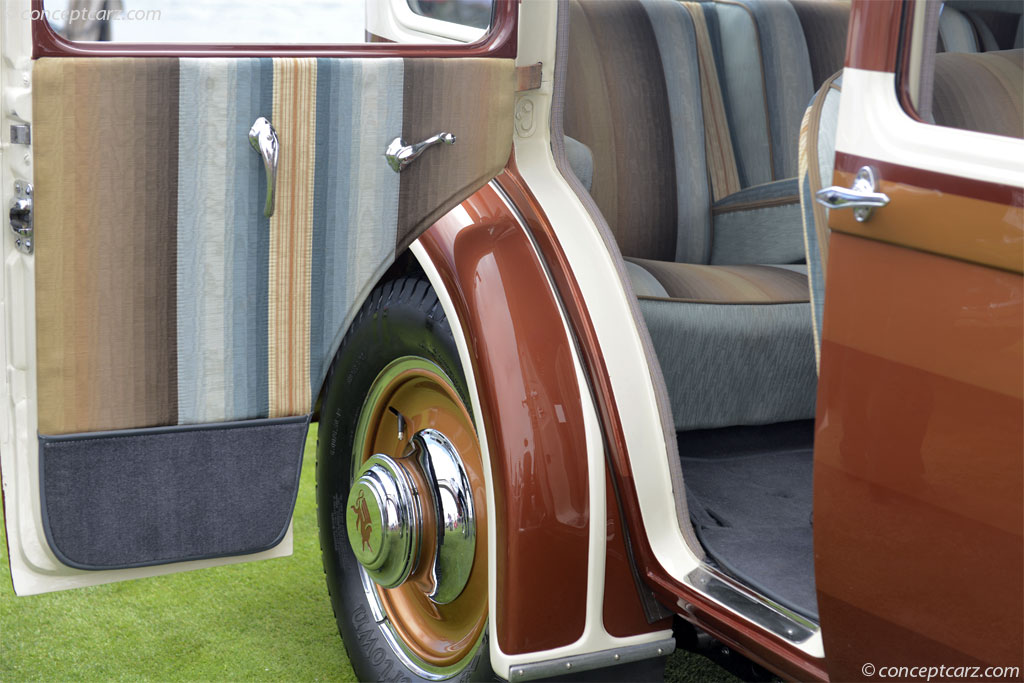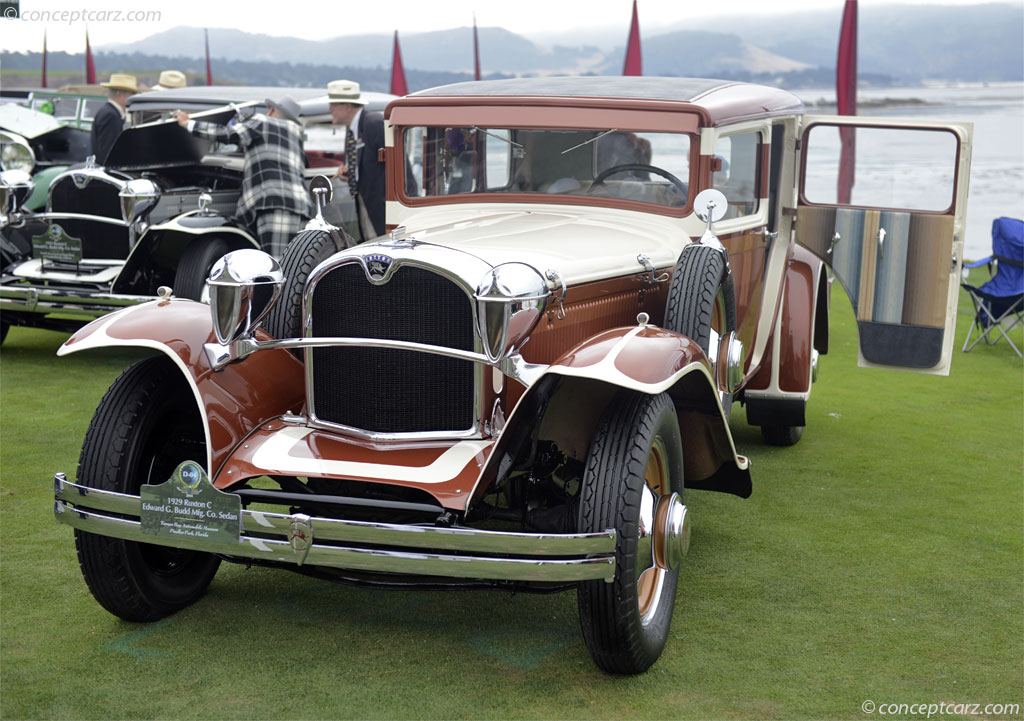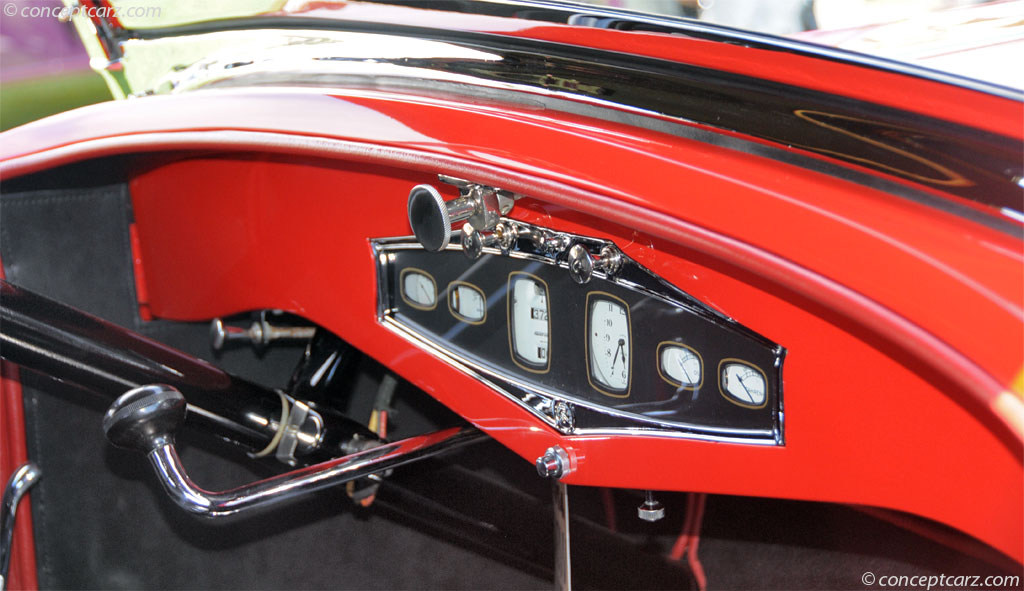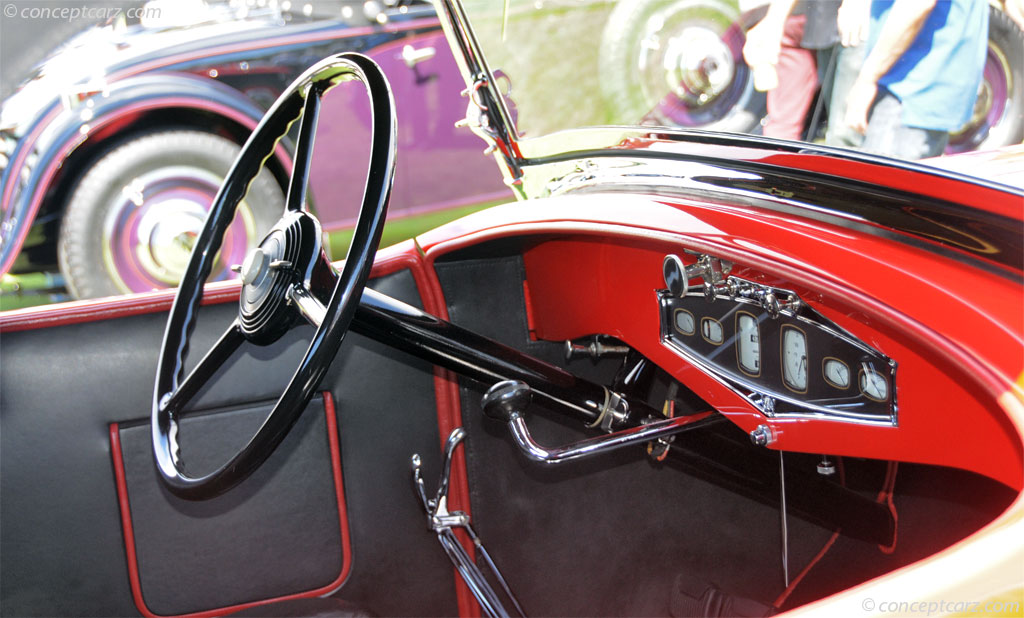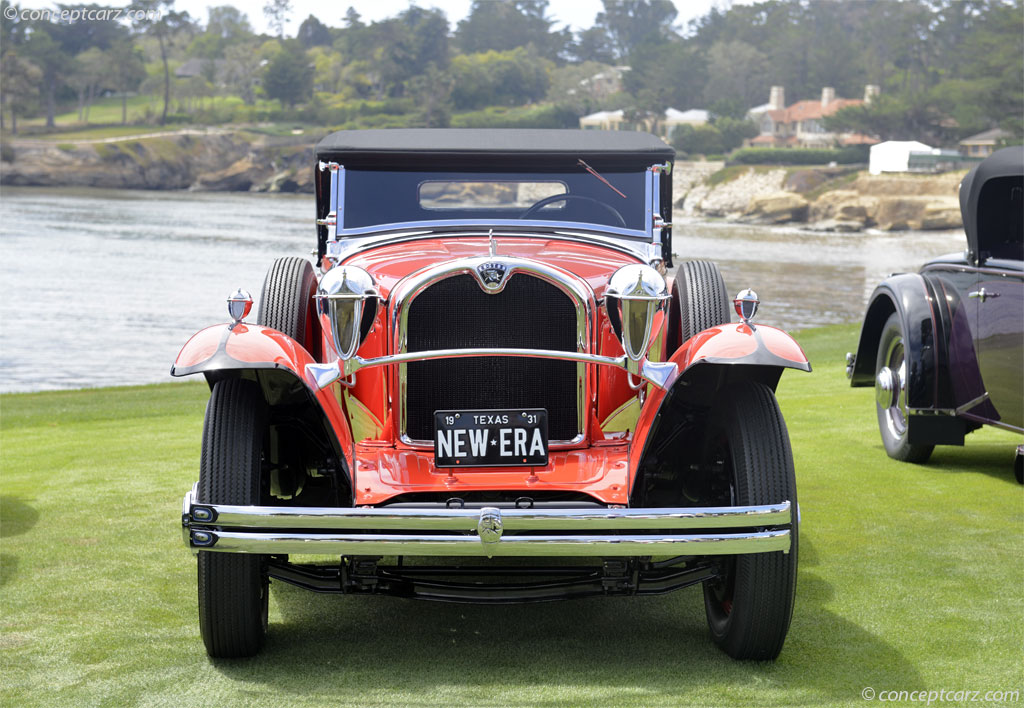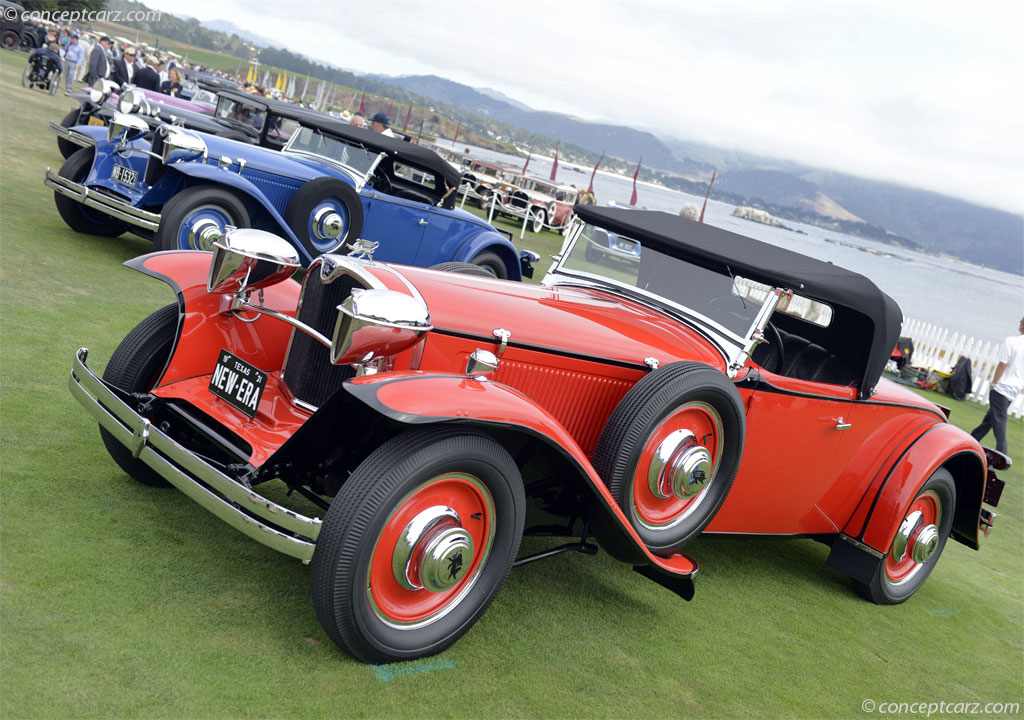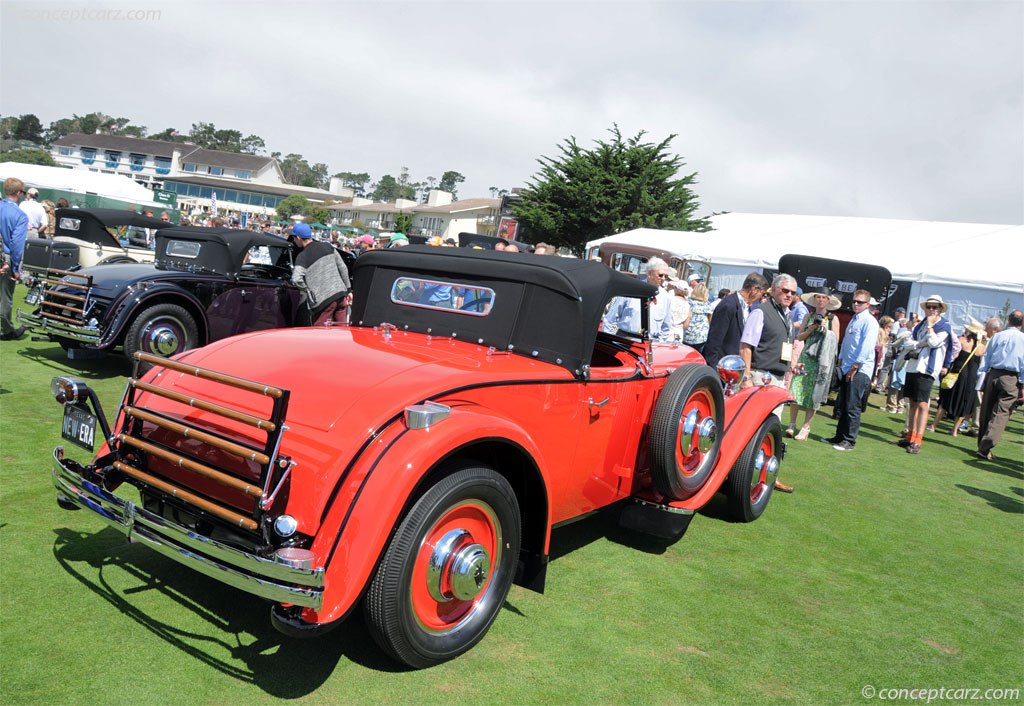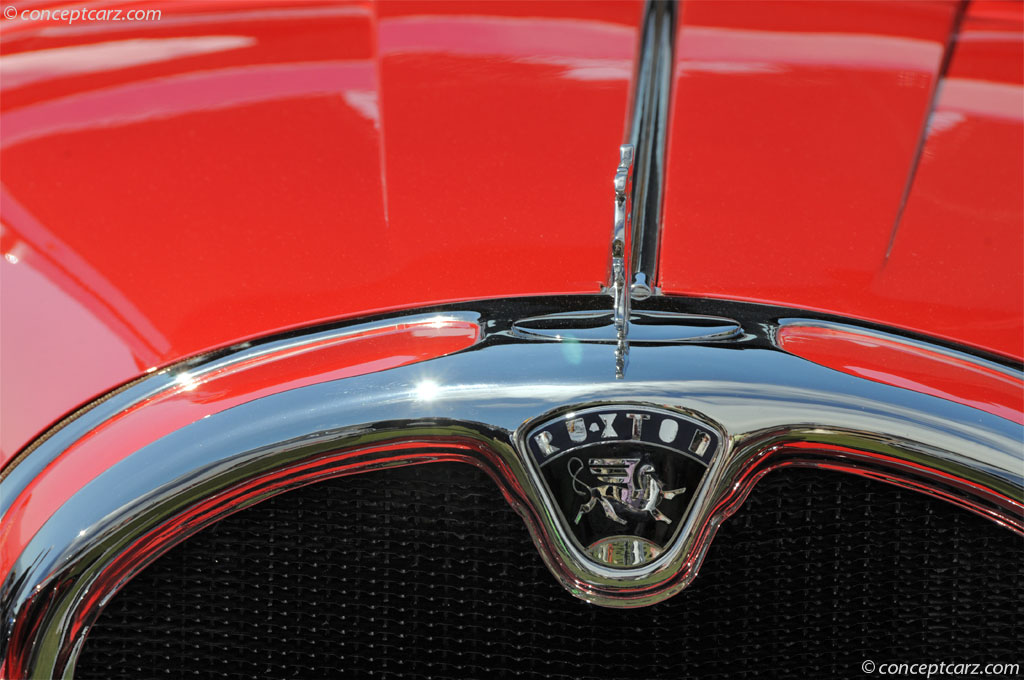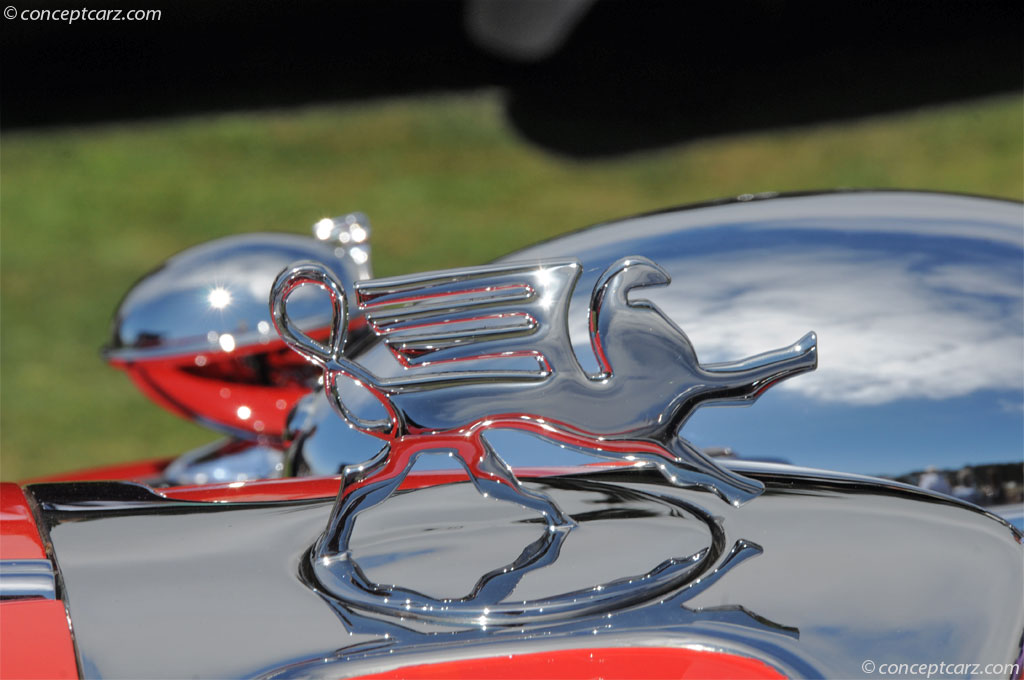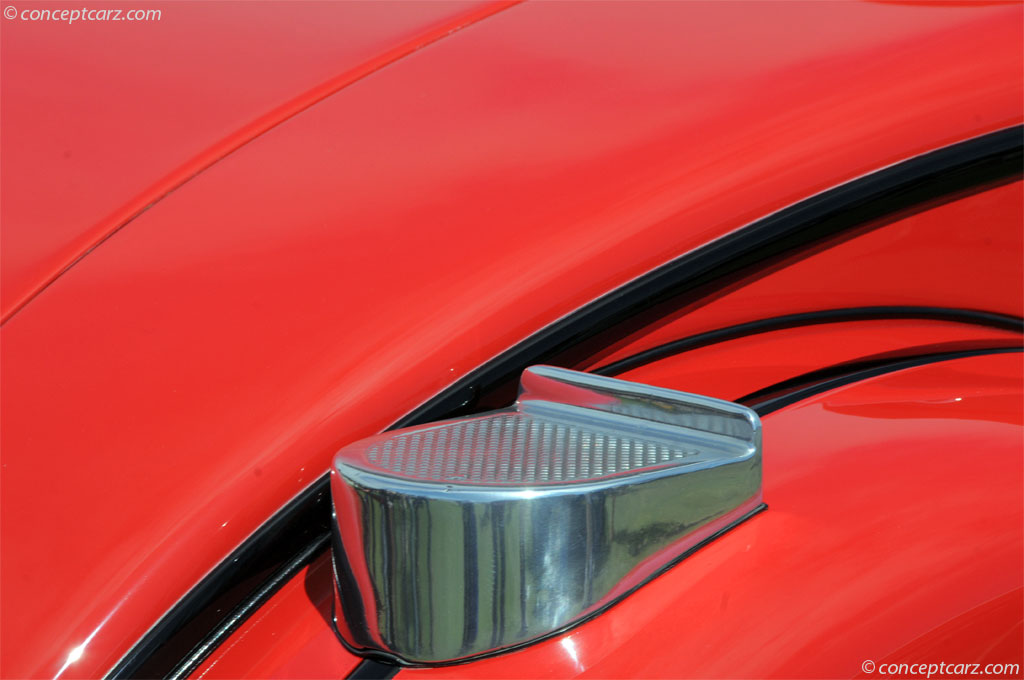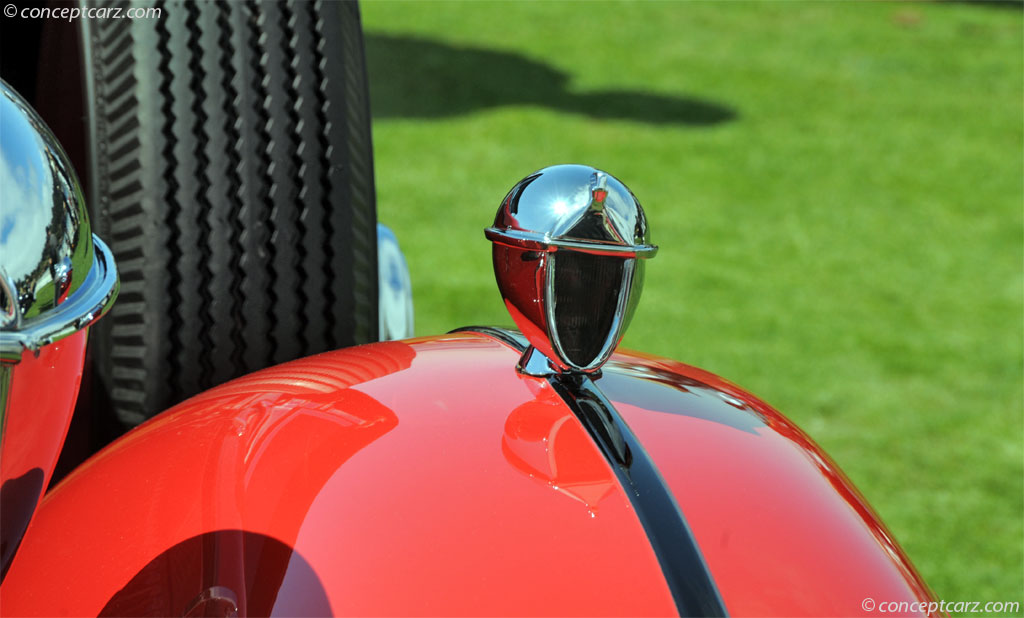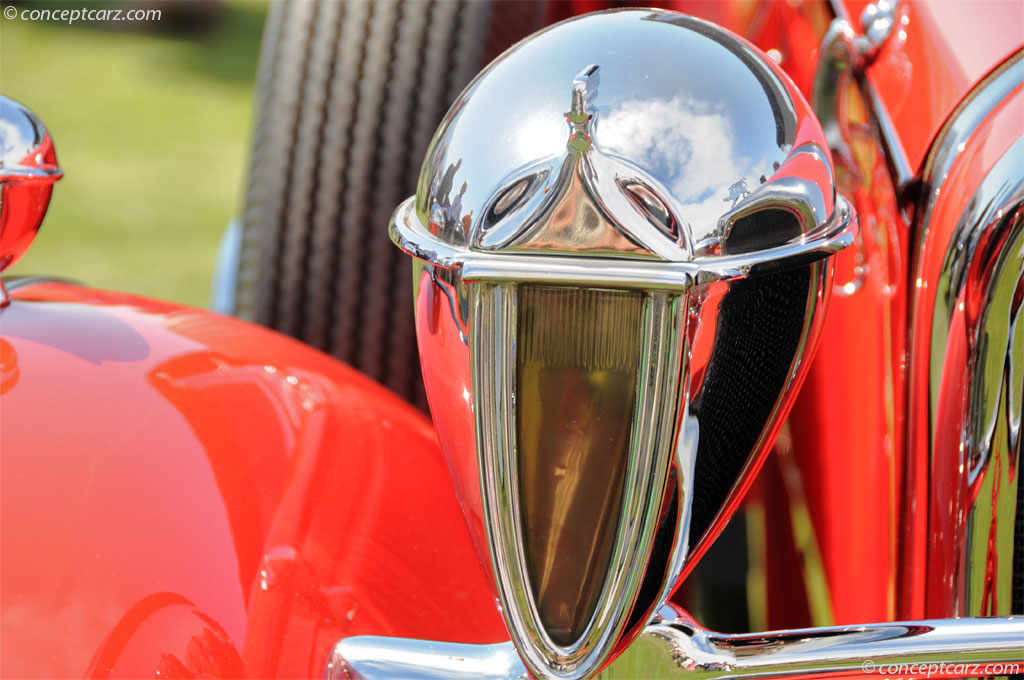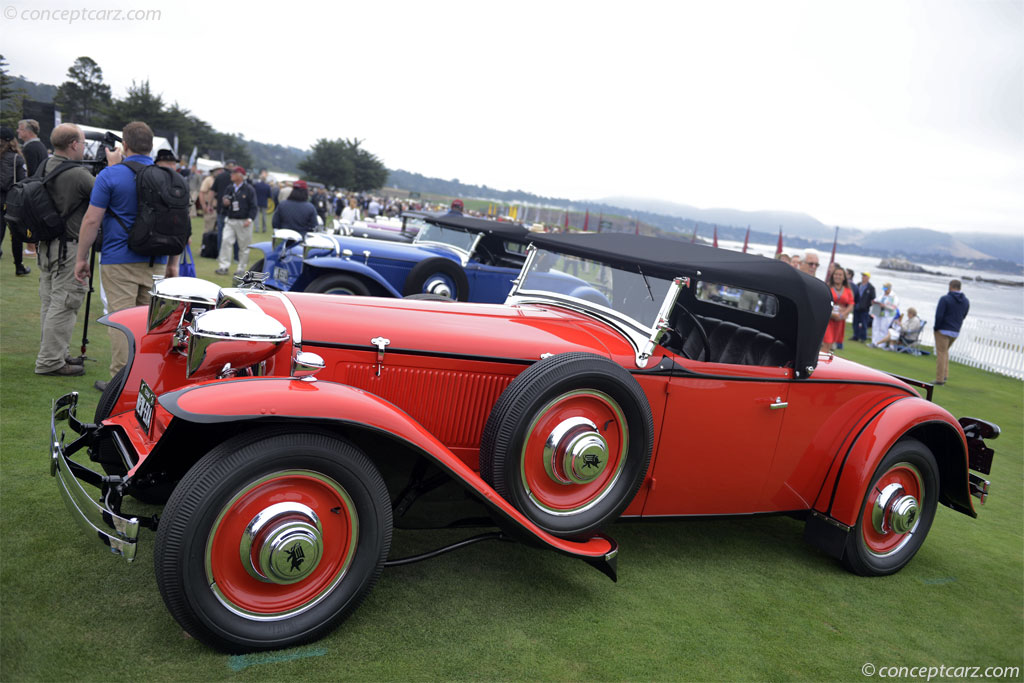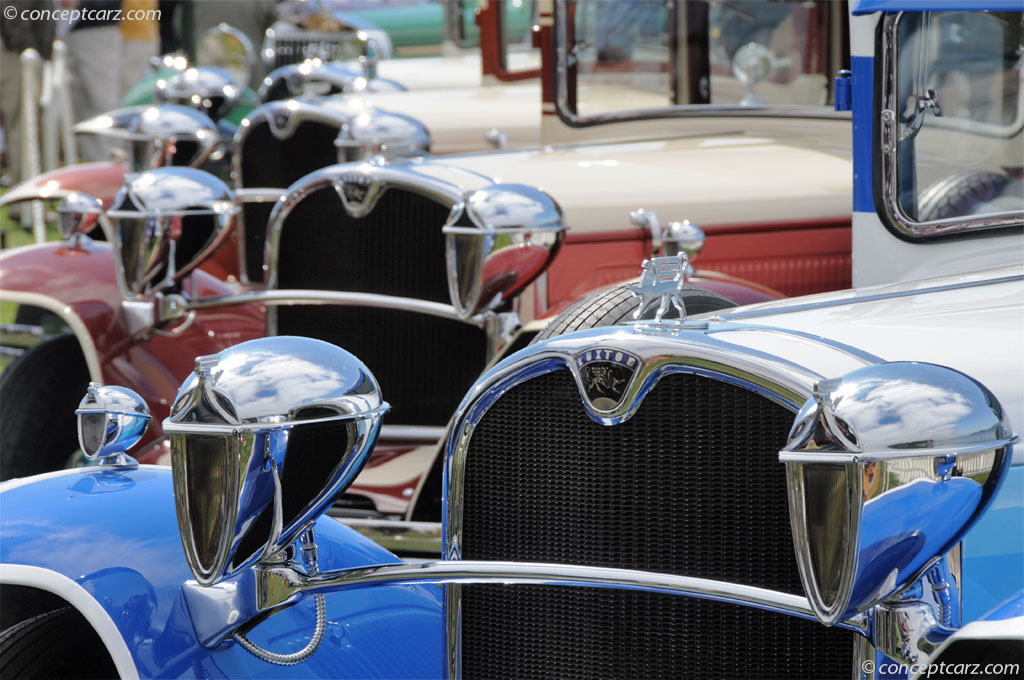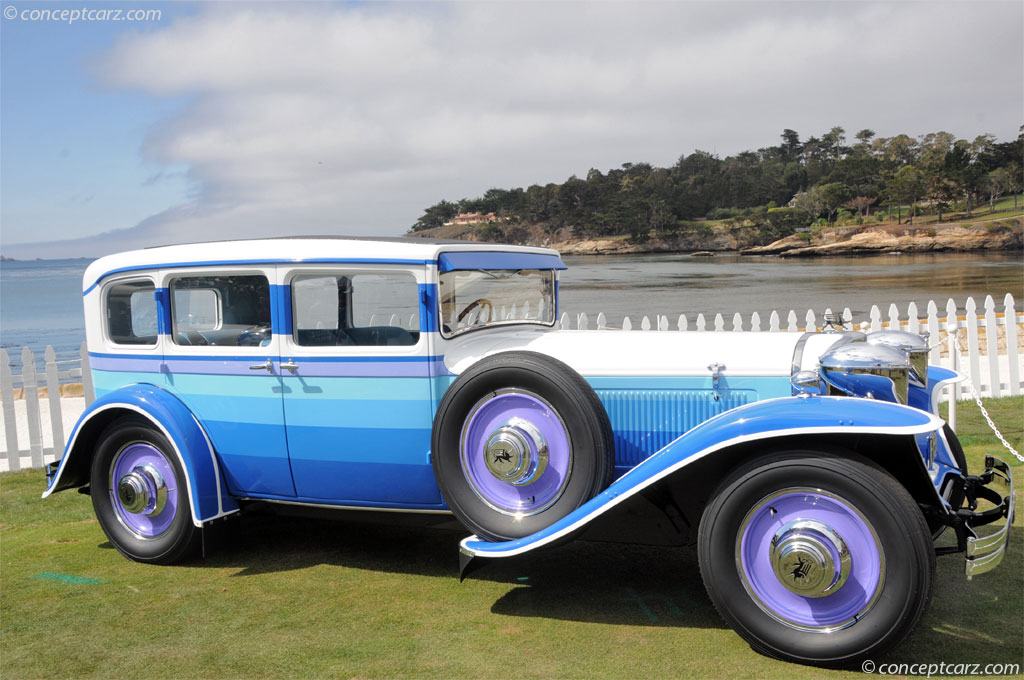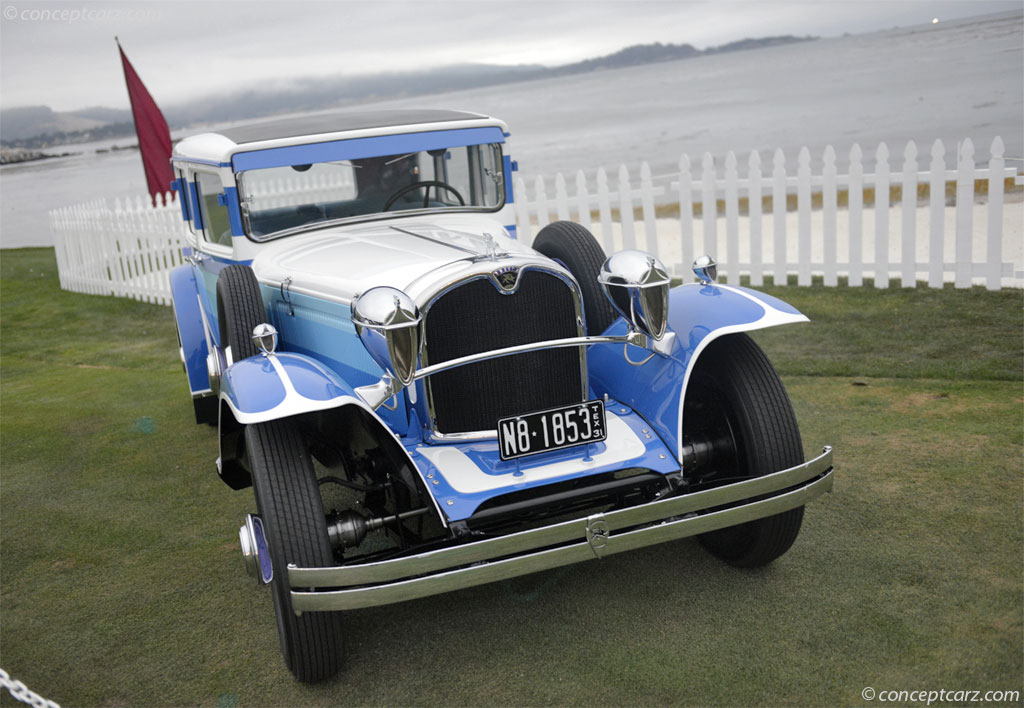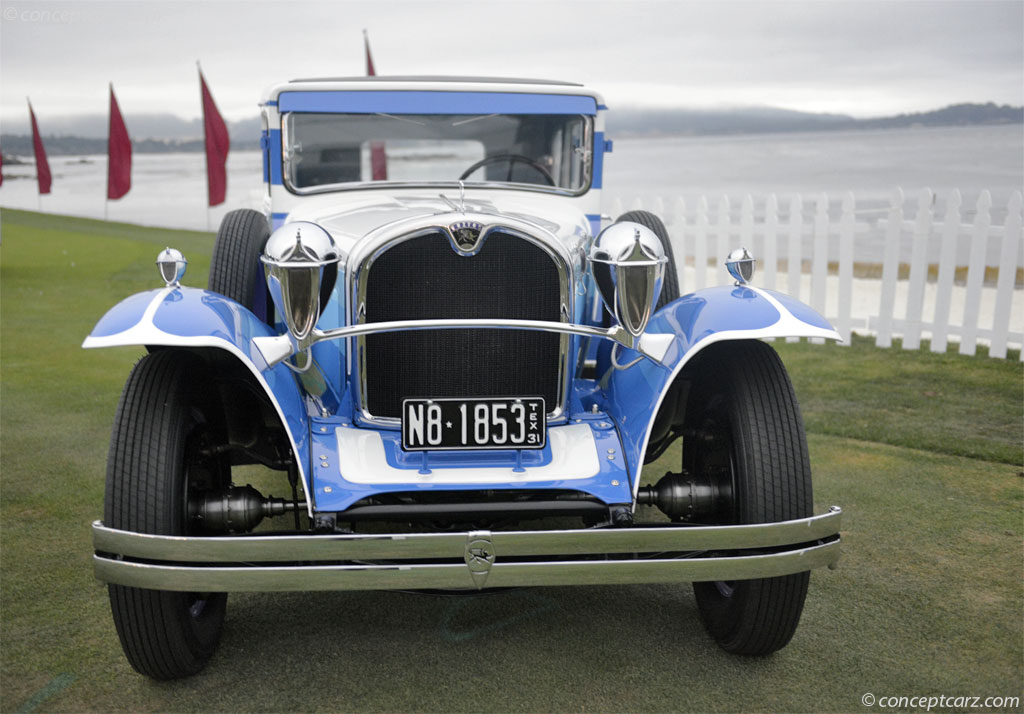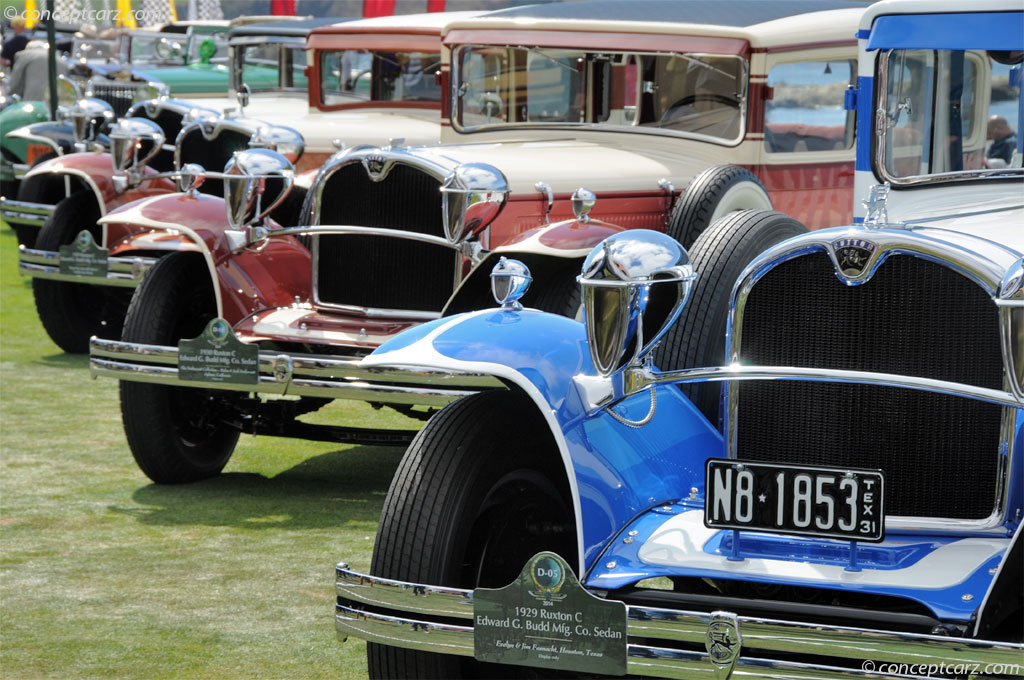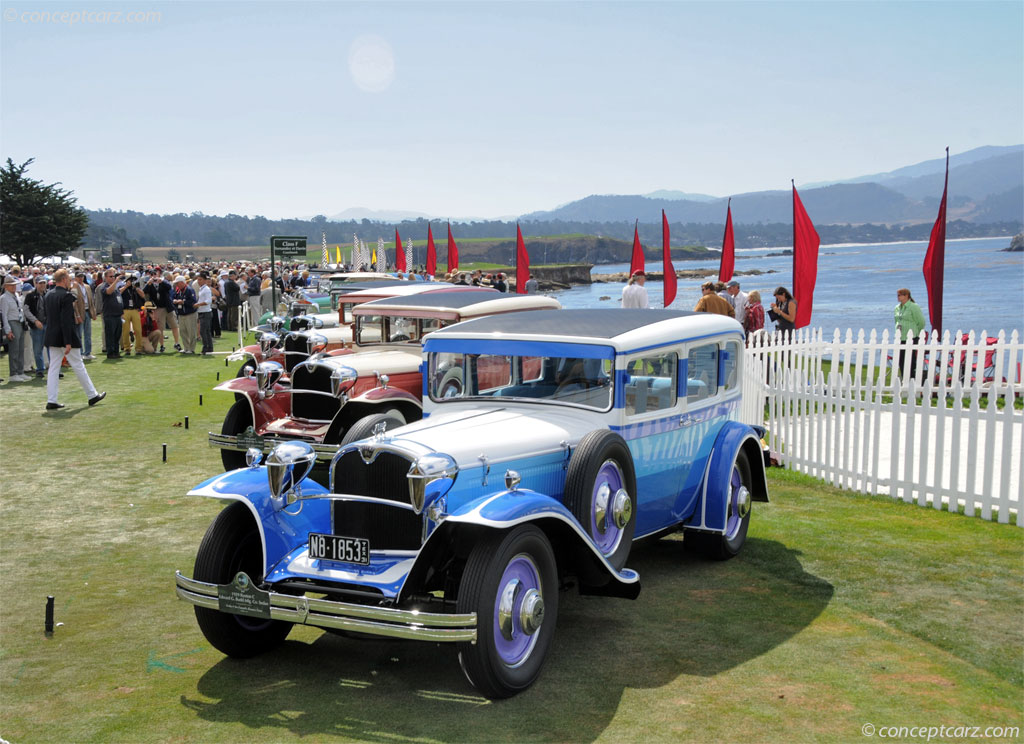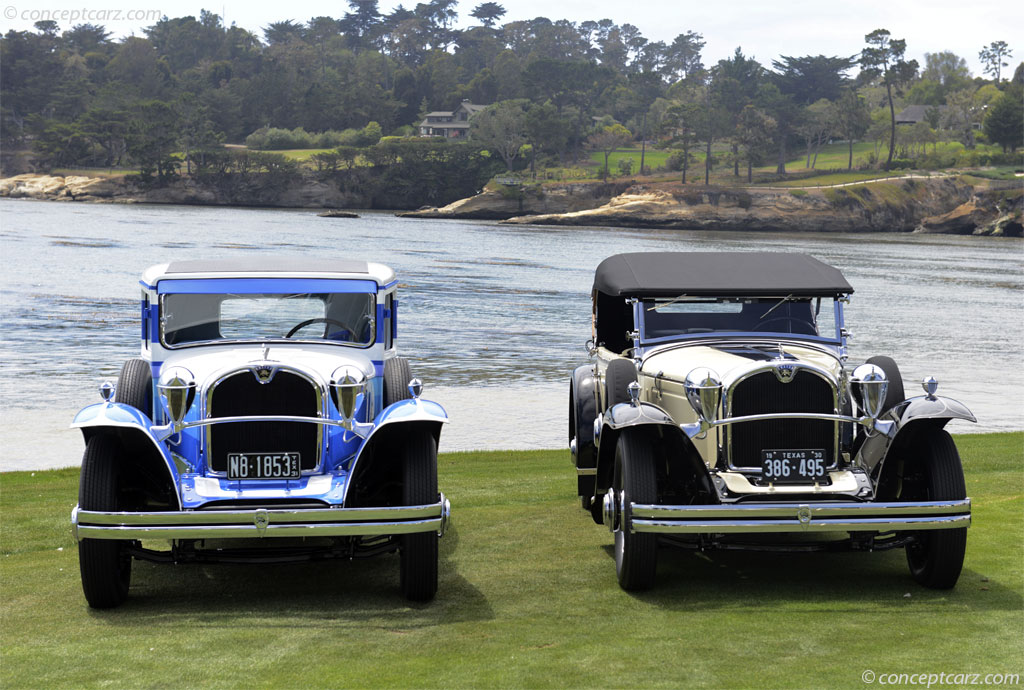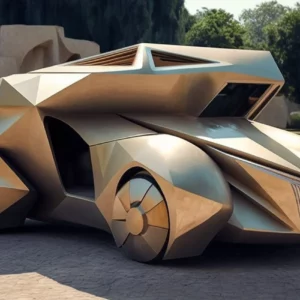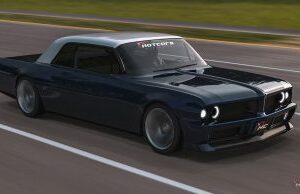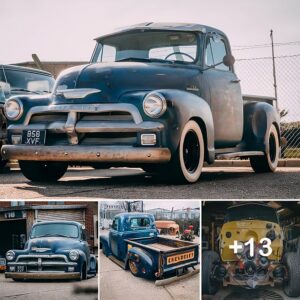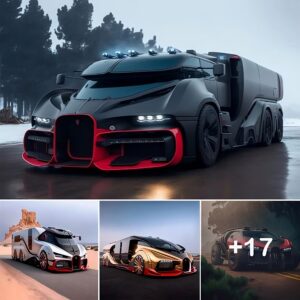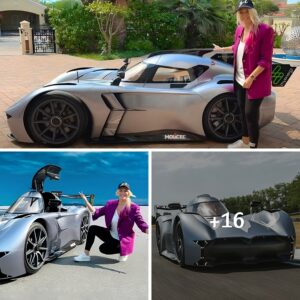The Ruxton automobiles were a combination of innovative front-wheel-drive engineering and avant-garde styling. Only a small number of engineers and racing drivers had explored the foreign concept of front-wheel-drive, and one of them was William J. Muller, whose career began on America’s early racetracks. He set a land speed record on Galveston Beach in 1912, driving an Excelsior motorcycle to 103 mph. The following year, he drove the front-wheel-drive Gila Monster race car, which undoubtedly influenced the rest of his career.
One of the most successful and in-depth explorations of front-wheel drive technology during the pre-war era on American soil was by Harry Miller, through a series of motorsport vehicles. On the road-going scene, and in direct competition with Ruxton, was the L-29 built by Cord.
Edward G. Budd Manufacturing of Philadelphia was a builder of auto bodies and rail cars, and they added Mr. Muller to their staff in 1920. By 1928, he had built a prototype front-drive sedan with a low-slung body which would ultimately become the basis for the Ruxton. Approximately 96 Ruxtons were built in total with the least expensive version selling for $4,500 making it one of the most expensive vehicles on the road. It was nine times more expensive than a new Ford and was approximately 40 percent higher than its archrival, the Cord L-29.
The front-wheel-drive configuration placed the engine and transmission directly above the front wheels, making the front wheels responsible for the bulk of the vehicle’s weight, steering, and braking (when equipped). It sat lower (approximately 10 inches lower) than its contemporaries which added to its stability at speed, and since the transmission and differential were combined into one unit, the interior was more spacious. With a straight frame, devoid of a rear kick-up, and the lack of rear drivetrain components, the vehicle was able to be much lower in height than competing cars whose average height was around six feet. The drive axles were about 12 inches closer to the engine, which positioned more weight over the drive axles, and compared to the L-29, the Ruxton was more efficiently engineered and lighter.
While Cord had simply bought Miller’s (and later, Van Ranst’s) front-wheel-drive transaxle patent rights, the Ruxton’s were engineered in-house, albeit using inspiration from the success of Miller’s front-wheel-drive race cars. Bill Muller’s prototype car used a Studebaker engine fitted to a Warner four-speed transmission and installed in a chassis that utilized a de Dion front axle running through Weiss constant velocity joints. The prototype was clothed by Budd body engineer Joseph Ledwinka using a modified Wolseley sedan body.
Ruxton initially intended to supply the body and concept to another company that would be responsible for assembly and marketing. One of Budd’s directors, Archie Andrews, had approached several carmakers, including Hupmobile, Gardner, and Peerless, but each declined. Ultimately, Andrews and Muller would form a new company, New Era Motors, and build the car themselves. The car was named after William V.C. Ruxton – an investor and one of the board of directors. Childe Harold Wills aided Muller in developing an improved transaxle that would shorten the lengthy drivetrain by over a foot and allowed the Ruxton to achieve a much better front/rear weight distribution than the L-29.
In the spring of 1929, Andrews announced the Ruxton and the commencement of production in July. This would not be the case, however, as Muller would not finish the first Ruxton Model A prototype until August, right around the same time as the Cord L-29 entered production. Production of the Ruxton began in June of 1930.
Since New Era Motors did not have production facilities of its own, Andrews used his experience of leveraging buyouts of marginal car companies by acquiring Moon of St. Louis and persuading the company to build the Ruxton. He was also able to convince Hartford, Wisconsin’s Kissel to provide assistance. Production of the bodies was handled by Budd and the straight-eight engine was from Continental.
The Continental Motor Company began engine production in 1905 and would produce engines for numerous (hundreds) independent automobile companies in the decades that followed, including Durant Motors Corporation, Jewett, Peerless, Overland, Paige, Columbia, Auburn, and many over. The production Ruxton was powered by a 268 cubic-inch Continental, side-valve, straight-eight engine fitted with a Zenith carburetor and offered 100 horsepower at 3,400 RPM. It was backed by a three-speed manual transmission and stopping power was courtesy of four-wheel hydraulic drum brakes.
Andrews recruited Broadway set designer Josef Urban to design unique paint schemes for Ruxton’s show cars, incorporating horizontal bands of varying colors, usually in a gradation pattern, to emphasize both the vehicle’s length and its lowness.
In comparison, the Cord L-29 used a slightly larger 289 cubic-inch Lycoming straight-8 that developed 125 horsepower at 3,600 RPM and a three-speed manual transmission built in-unit with the front-wheel-drive system. The crankshaft pushed out through the front of the block, mounted alongside the flywheel, driving the transmission. Its drive system was sourced from the highly-successful Indy 500 Miller race cars, using the same de Dion layout and inboard brakes. Production of the L-29 lasted from 1929 through 1932 with 4,400 units sold.
Just like Cadillac had beaten Marmon to market with its V-16 engine, Cord introduced its front-wheel-drive automobile ahead of Ruxton. Cord was part of the Auburn, Cord, Duesenberg company which had a much larger pool of talents and resources to draw from, while Ruxton (like Marmon) was much smaller. Getting the Ruxton automobile to market was not without turmoil, as William Ruxton did not support the project and later sued Andrews in protest. C.W. Burst, president of the Moon Company, barricaded himself in the company headquarters in protest of Andrew’s acquisition of the company. As Andrews was buying Kissel stock in preparation for another takeover, the Kissel Brothers displayed their dissatisfaction by filing for receivership in November of 1930.
Introduced during the start of the Great Depression, when resources quickly evaporated, production of the Ruxton was very brief, ending in November of 1930, just four months after it had been introduced. Just 96 Ruxton vehicles were built before Moon and Kissel went out of business, bringing an end to Ruxton automobile production. Kissel later emerged from receivership as the Kissel Manufacturing Company and later was merged into the West Bend Aluminum Company. The Moon Company never recovered from its legal troubles, battling its creditors in the courtroom through 1965. The automotive landscape was in dire straights during the Great Depression and Andrews had no shortage of companies to ‘rescue.’ He was able to gain control of Hupp, but he was quickly removed by angry shareholders. He passed away in 1938.
The Oldsmobile Toronado, produced from 1966 to 1992 over four generations, was the first U.S.-produced front-wheel-drive automobile since the demise of the Cord in 1937.
